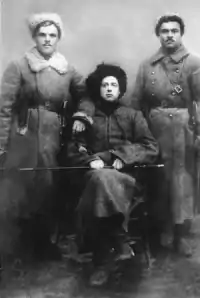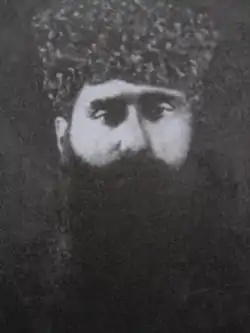
A village otaman (Ukrainian: ота́ман, IPA: [oˈtɑmɐn]; Russian: атама́н, IPA: [ətɐˈman]) was the head of a village community in Ukraine from the 14th until the 20th centuries. Village otamans were elected or chosen by state authorities of some or other level.
Civil War for Democracy, 1917-1923, Ukraine

During the Civil War on the territories of Russian Empire and especially modern Ukraine, the "village otaman" became a concept, designating commanders of small self-organized military and para-military troops, organized sometimes by people to defend their rights and liberties and sometimes having clearly expressed criminal character ("banda"). The phenomenon of village otamans existed during the Russian Civil War and some time after, until the new state system with its police began to fully function. Vivid examples of village otamans are Chorny Voron (Chornousov Ivan Yakovych) and Green Otaman (Terpylo Danylo Ilkovych).
"Life of Ukrainian province from December 1918 occurred under control of hundred of local otamans and batkas, who ruled insurgent, voluntarist, cossack formations, recruited from peasants. This troops defended interests of separate volost or village, sometimes were at war with each other and contra cities, where the authority hostile to peasants were "sited", from which there was only "benefit" - to get orders and receive punishment and requisitionary troops."[2]
Name "greens" in historical science
Alias Green Otaman used by Terpylo Danylo Ilkovych later gave one of the names to the phenomenon of "village otamans" often used in soviet books about this period of history of region - "greens", in contrast to "reds" and "whites".
References
- ↑ "Вороння торжествує даремно > Резонанс > Еженедельник 2000". Archived from the original on February 3, 2014. Retrieved April 11, 2013.
- ↑ "ВОЕННАЯ ЛИТЕРАТУРА --[ Биографии ]-- Савченко В. А. Авантюристы гражданской войны".